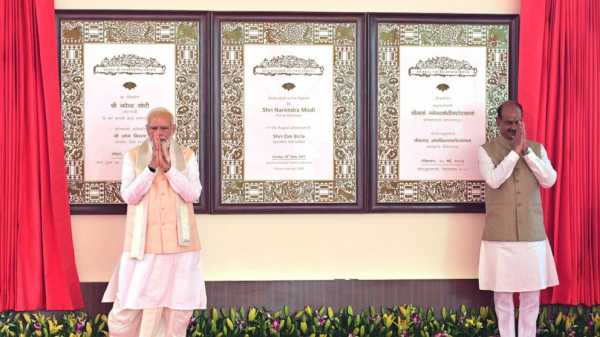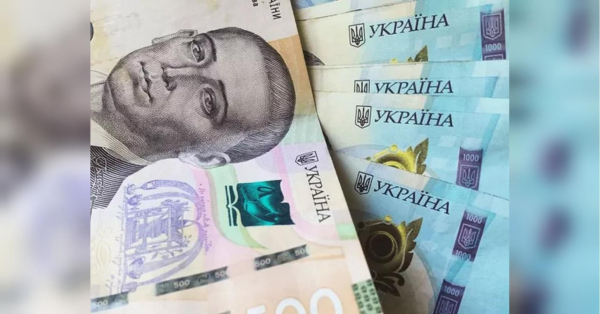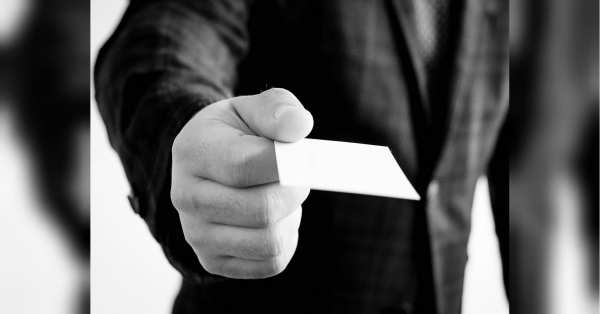
NEW DELHI — India’s major opposition parties on Sunday boycotted the inauguration of a new Parliament building by Prime Minister Narendra Modi in a rare show of unity against his Hindu nationalist ruling party, which has ruled for nine years and is seeking a third term in next year's elections.
Modi inaugurated the new Parliament in the capital of New Delhi by offering prayers as Hindu priests chanted religious hymns. Opposition parties criticized the event saying Modi had sidelined President Droupadi Murmu, who has only ceremonial powers but is the head of state and highest constitutional authority.
Shortly after the inauguration, a visibly beaming Modi entered Parliament amid a rousing applause by his party lawmakers who chanted “Modi, Modi." He delivered an almost 40-minute speech in which he hailed India's parliamentary democracy and said the country had left behind its colonial past, referring to the old Parliament building that was built by the British when they ruled India.
“India is the mother of democracy," Modi said, as lawmakers thumped their desks. “Several years of foreign rule stole our pride from us. Today, India has left behind that colonial mindset."
The opposition Congress party leader Rahul Gandhi tweeted: “Parliament is the voice of the people. The Prime Minister is considering the inauguration of the Parliament House as a coronation."
At least 19 opposition parties skipped the event, which coincided with the birth anniversary of a Hindu nationalist ideologue.
Opposition parties said in a statement Wednesday that Modi's decision to inaugurate the building was “a grave insult” to India’s democracy, because the government had “disqualified, suspended and muted” opposition lawmakers while passing “controversial legislation” with little debate.
“When the soul of democracy has been sucked out from the parliament, we find no value in a new building,” the parties said.
India’s powerful Home Minister Amit Shah said the opposition had politicized the event. Other leaders from Modi’s party said the boycott was an insult to the prime minister.
The new triangular-shaped building — built at an estimated cost of $120 million — is part of a $2.8 billion revamp of British-era offices and residences in central New Delhi that will also include blocks of buildings to house government ministries and departments, and Modi’s new private residence. The entire project, called the “Central Vista,” is spread over 3.2 kilometers (1.9 miles).
The project was announced in 2019, and Modi laid the foundation in December 2020.
The plan has drawn intense criticism from opposition politicians, architects and heritage experts, many of whom called it environmentally irresponsible, a threat to cultural heritage and too expensive.
Outrage grew in 2021, when at least 12 opposition parties questioned the project’s timing, saying it was built as the country faced a devastating surge in coronavirus cases. They branded the revamp as Modi’s “vanity project” and said its construction was prioritized over the loss of lives and livelihoods during the pandemic.
A year earlier, a group of 60 former civil servants wrote an open letter to Modi to highlight the architectural value of the old Parliament and said the new plan would “irrevocably” destroy the area’s cultural heritage.
Modi’s government has said the overhaul was necessary because the older building was “showing signs of distress and overutilization” and that the new design “combines the country’s heritage and traditions.”
The new building sits just across from India’s old Parliament, a circular structure designed by British architects in the early 20th century. The new four-story building has a total of 1,272 seats in two chambers, almost 500 more than the previous one.
The old Parliament will be converted into a museum.
During the televised ceremony Sunday, Modi prostrated himself before a royal golden scepter that his Bharatiya Janata Party says symbolized the transfer of power when it was gifted to the country’s first prime minister on the eve of India’s independence from Britain in 1947. Dozens of Hindu priests followed Modi inside Parliament, where he installed the scepter near the chair of the speaker.
Modi's critics and opposition leaders have questioned the scepter’s historicity and said the emblem is appropriate for a monarchy, not a democracy.
Last year, Modi inaugurated a refurbished colonial-era avenue in the heart of New Delhi that is used for ceremonial military parades. The boulevard was earlier called Rajpath, or Kingsway, but Modi’s party changed it to Kartavya Path, or Road to Duty, arguing the old name was a “symbol of slavery” that had been "erased forever.”
The controversy over the new legislative building comes just months after opposition leaders protested Gandhi's disqualification from Parliament in a defamation case over remarks he made about Modi's surname.
Barely a mile away from the ceremony, a heavy police presence overpowered about 100 protesting Indian wrestlers and their supporters. They accuse their federation president of sexual misconduct and had planned to march to the new Parliament building. Some of the protesters scuffled with police and were taken away in a bus.
Wrestling Federation of India President Brij Bhushan Sharan Singh, who has denied the accusations, is a powerful lawmaker from Modi’s party.
Sourse: abcnews.go.com






